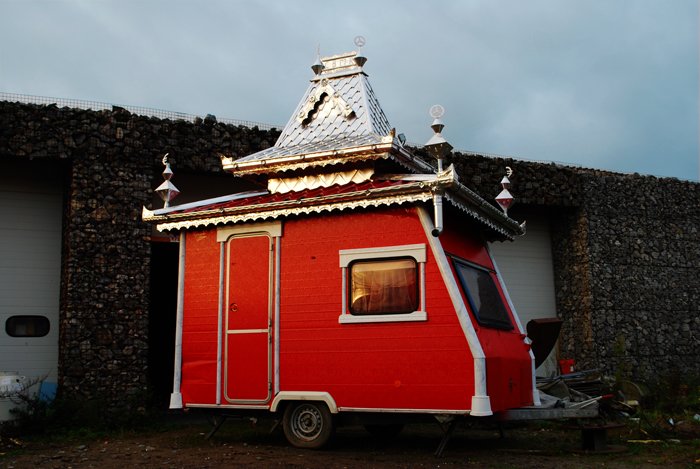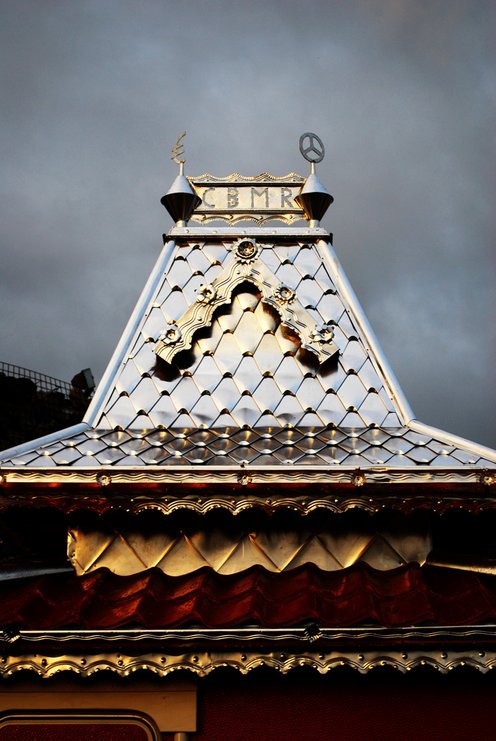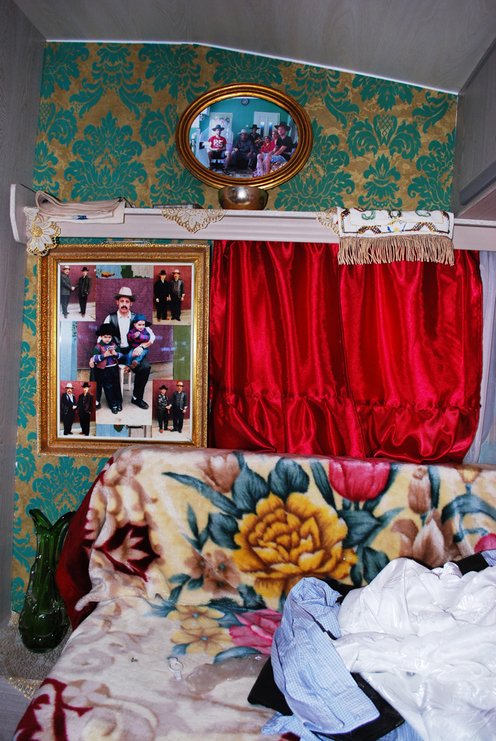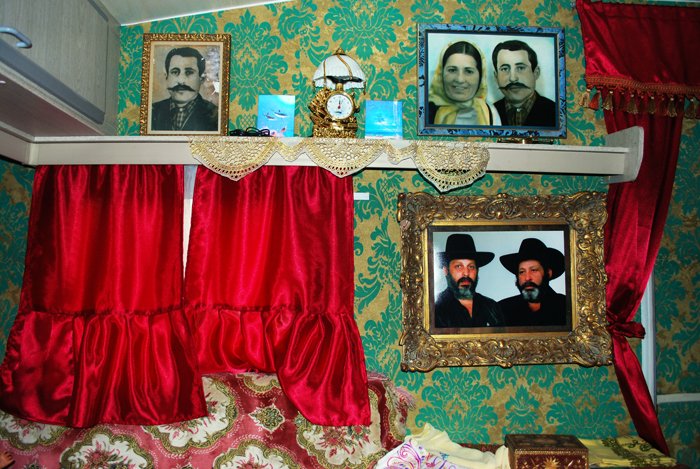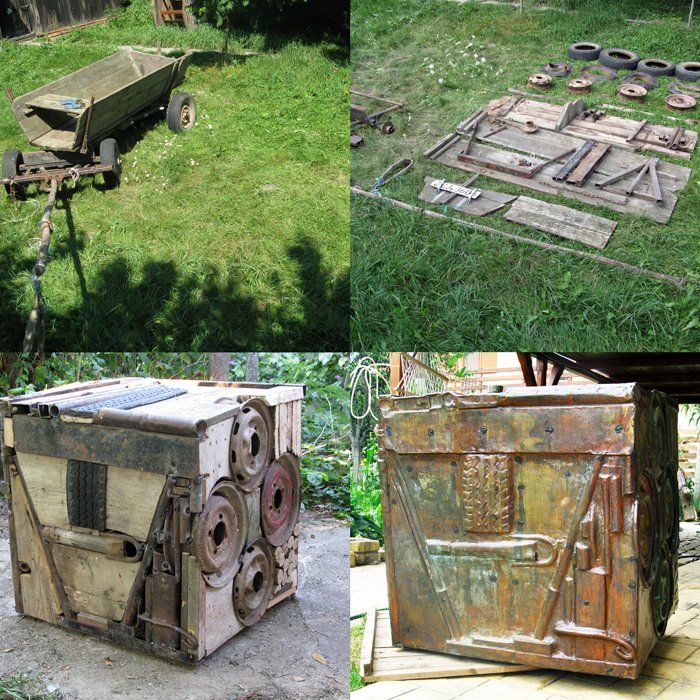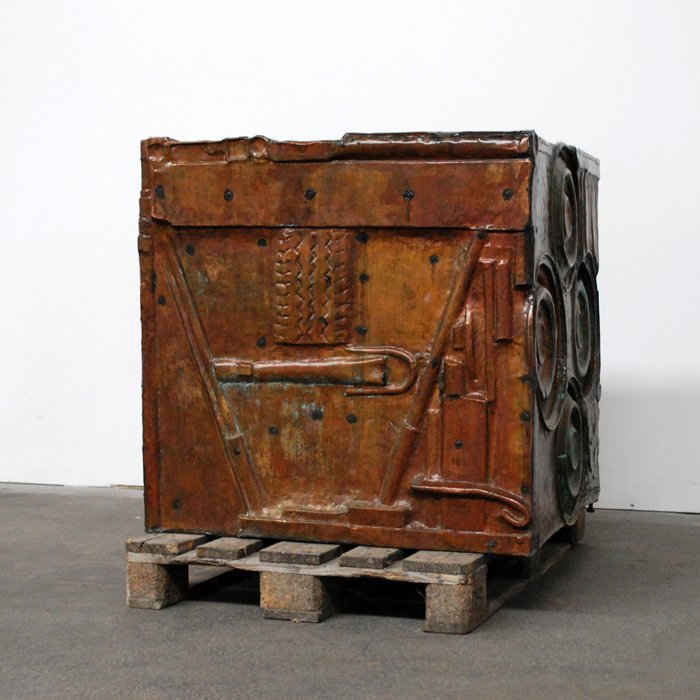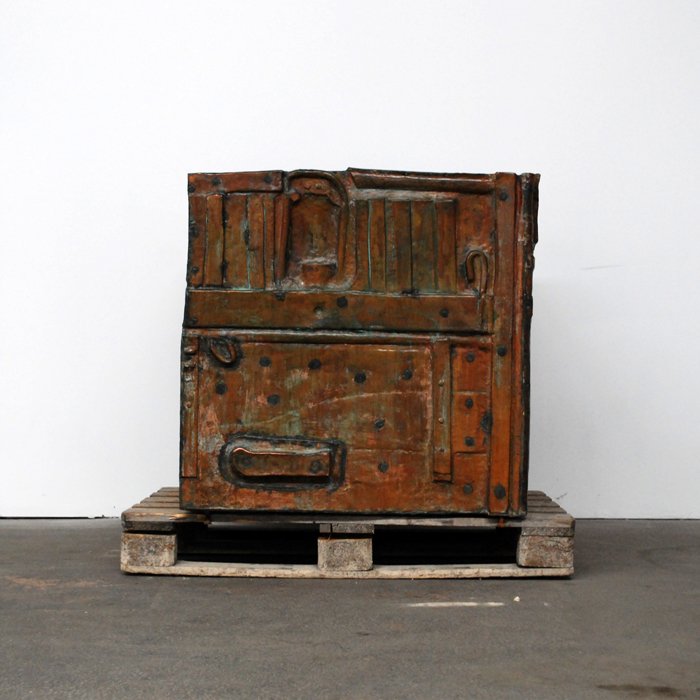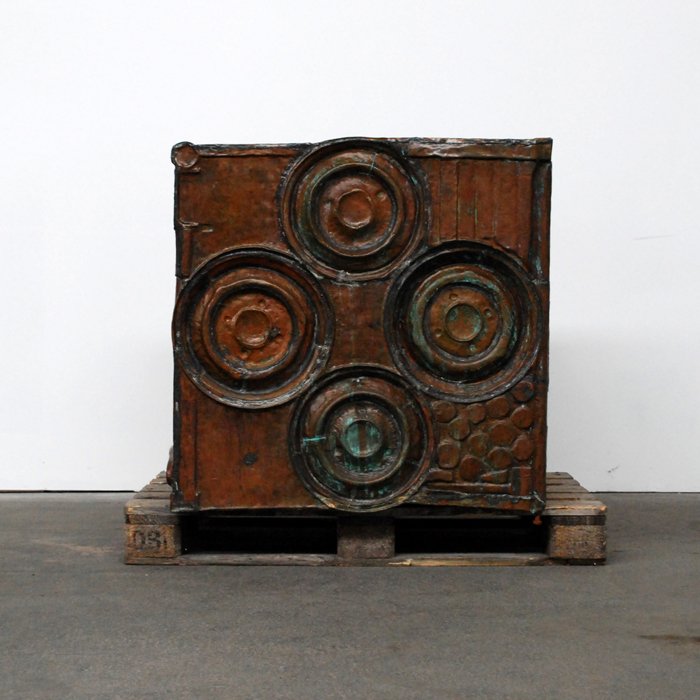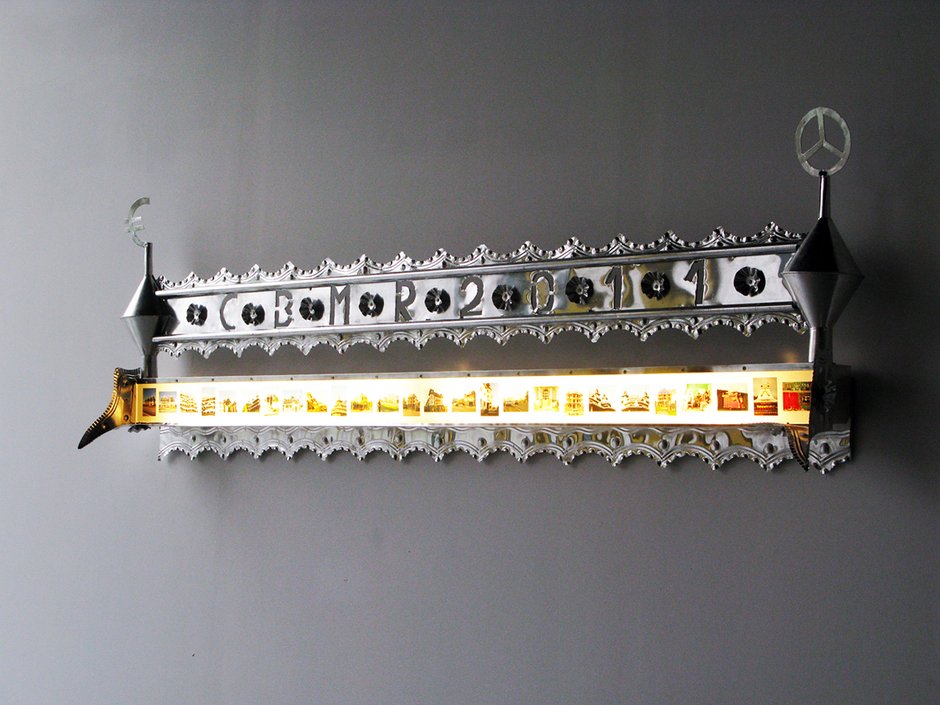Caravan: 420x 360 x 210 cm, found caravan, hand made alumium rooftop, personal items (interior)
Cube: 90 x 90 x90 cm, reassembled carriage, hammered copper
Light box: 180 x 36 x 27 cm, aluminum, print on pvc, TL lights
The project “No Borders Equals Tolerance” is made in collaboration with Cristian Bors. It has received the ARTE TV/Cutlog Award during an exhibition at Bourse Du Commerce (Paris) in 2011 and it wanders around the Roma culture.
Its subject was chosen because of the the temporary solution Nicolas Sarkozy, (president in function at that time) found, which consisted in giving Romas 300 euros to go back to Romania. This led also to the confusion created over years around the origin of the Romanies. To common knowledge, Romanies are a group of wanderers.
The objects realized for this project are working as a documentation of the summer of 2011 spent in Romania, beside a family of Romanies. Our desire was to show and learn about their skills concerning the processing of copper and aluminium sheet, craftsmanship only known by a few and which, mostly because of technology, is slowly losing terrain. The roof top of the caravan is inspired from the style used in the construction of the Romani palaces present in certain parts of Romania. We chose the caravan as a symbol for their nomadic character. It is a hybrid between a palace and a caravan, a nomadic castle which symbolizes their constant escape outside the system. The interior of the caravan is decorated with personal items bought from the same family: photos, bed sheets, curtains, clothes, etc. As for the cube, it is a packed carriage, covered with copper sheet. The carriage used to be an indispensable item for them when it came to travelling and it is still used in our times by a few families. We purchased one from a family, dismantled it, cut it up in pieces and reassemble it in the shape of a cube. Then, the family covered it with copper. Their task was to process the copper in such a way, that the shapes of the carriage under it could be still visible.
Our goal was to question concepts such as steadiness, constancy, and integration.
and integration. We used the same type of elements to build the light box (which were made by the same family) and it shows pictures of the Romani castles which were taken during our trip in Romania.
